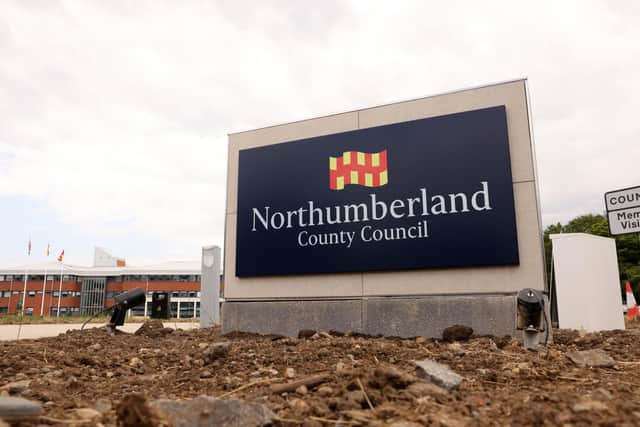Alnwick changes proposed as Boundary Commission reveal latest submission for redrawing of Northumberland's electoral map
and live on Freeview channel 276
Sweeping changes were revealed by the independent commission in May, after the council themselves put forward their version in January. The commission then launched a consultation with residents to gather their views.
Under the proposals, the number of seats on the council would increase from 67 to 69. Key differences are found in Cramlington and Blyth, where population growth has necessitated the creation of two all-new wards. The local democracy reporting service rounded up all the key changes in May.
Advertisement
Hide AdAdvertisement
Hide AdFollowing the public consultation, during which 262 people and organisations had their say, the commission has made further changes. Under the new proposals, the county’s only two-councillor ward in Alnwick would be scrapped and replaced with two separate Alnwick wards.


The commission say it received evidence that “this rather than a two-councillor division best reflected the community identity of electors in Alnwick and provided for convenient and effective local government.”
Cllr Gordon Castle, Alnwick ward member, said: “I must say they are very different from earlier proposals and from Alnwick’s point of view removes Alnmouth and Lesbury and include these villages in Longhougton ward as an extended coastal strip.
"Alnwick loses its two-member ward status and is divided in two parts, with approximately equal numbers for each member, the main purpose of the review.
Advertisement
Hide AdAdvertisement
Hide Ad"This does remove the confusion of residents having to choose which of two members to approach and is consistent with the rest of the county.


"The current Alnwick ward arrangements depend for effectiveness on both members getting on well with each other, which is presently the case but cannot always be guaranteed.
"It also gives residents two bites of the cherry, which can lead to inconsistent outcomes and means that elected Alnwick members are unavoidably dealing with twice the number of residents as in any other wards.
"I do not think that the proposed new boundaries are harmful to the interests of Alnwick.”
Advertisement
Hide AdAdvertisement
Hide AdBut Cllr Swinbank labelled the decision ‘both surprising and disappointing’.
"Surprising because they have gone against both their previous review findings which designated the Ward originally as a coherent community, and their recent draft review of Northumberland wards which essentially kept this same structure,” he explained.
“Further, it is also disappointing because arbitrarily splitting Alnwick down the middle will not improve the representation the town deserves on Northumberland County Council.
The current two councillor structure in Alnwick encourages a grown-up dialogue between councillors for the benefit of the people they serve. It encourages joint working irrespective of party politics.
Advertisement
Hide AdAdvertisement
Hide Ad"This model works well and I would have liked to have seen it extended to other urban areas in the county beyond Alnwick, for the benefit of residents. It is sadly, a missed opportunity to improve how our local democracy functions in Northumberland.
“In the meantime however I remain committed to all the residents of Alnwick, Denwick, Alnmouth and Lesbury and will continue to serve them to the very best of my ability, in conjunction with Cllr Castle.”
Furthermore, a division of Cramlington East and Double Row was proposed, which would contain part of the Cramlington and Seaton Valley parishes. The commission explained that by doing so, it would be able to propose a division that would keep the entire village of New Hartley solely in the Hartley division.
Previously, the village was divided up into other divisions. Further changes made to the earlier proposals cna be found on the LGBCE’s website.
Advertisement
Hide AdAdvertisement
Hide AdPublishing the recommendations Professor Colin Mellors, Chair of the Commission, said: “We are very grateful to people in Northumberland. We looked at all the views they gave us.
“They helped us improve our earlier proposals. We believe the new arrangements will deliver electoral fairness while maintaining local ties.”
The changes become law once Parliament has approved them. Staff at the council will ensure that the arrangements are in place for the 2025 elections.